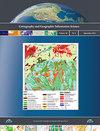Automatic vectorization of fluvial corridor features on historical maps to assess riverscape changes
IF 2.4
3区 地球科学
Q1 GEOGRAPHY
Cartography and Geographic Information Science
Pub Date : 2022-07-26
DOI:10.1080/15230406.2022.2091661
引用次数: 1
Abstract
ABSTRACT The vectorization of historical maps is an important scientific issue for understanding the dynamics of change recorded by territories. Historical maps are potentially an excellent source of data for characterizing river changes at large scales. The use of vectorized data is essential for such characterization, as well as for highlighting changes in the planform alignment of such reaches over time. At a regional network scale of several thousand kilometers of river, such work requires the vectorization of several hundred or even thousands of maps. This work proposes an automated vectorization procedure for the hydrographic network detailed in the cartographic resources of the IGN (the French National Mapping Agency). The ultimate goal is to use these historical maps to track the planform evolution of the elementary landscape units (water, bare banks, and riparian vegetation) that constitute river corridors at the basin network scale. The Historical Maps Vectorization Toolbox was developed to automatically vectorize river corridor objects (sediment banks, water surfaces, and vegetation polygons) with a high level of accuracy. The toolbox works with a 2-step process: first it classifies the colors detected on the map, then it reconstructs the objects of the fluvial corridor. We also demonstrate a practical use of the toolbox through measuring changes in the surface area of river networks of several hundred kilometers.历史地图上河流走廊特征的自动矢量化,以评估河流景观变化
摘要历史地图的矢量化是理解领土变化动态的一个重要科学问题。历史地图有可能成为大规模表征河流变化的绝佳数据来源。矢量化数据的使用对于此类表征以及突出显示此类河段平面线形随时间的变化至关重要。在数千公里河流的区域网络规模下,这项工作需要对数百甚至数千张地图进行矢量化。这项工作为IGN(法国国家测绘局)的制图资源中详细介绍的水文网络提出了一种自动矢量化程序。最终目标是使用这些历史地图来跟踪构成流域网络规模河流走廊的基本景观单元(水、裸露河岸和河岸植被)的平面形态演变。开发历史地图矢量化工具箱是为了以高精度自动矢量化河流走廊对象(沉积物库、水面和植被多边形)。该工具箱的工作过程分为两步:首先对地图上检测到的颜色进行分类,然后重建河流走廊的对象。我们还通过测量数百公里河网表面积的变化,展示了工具箱的实用性。
本文章由计算机程序翻译,如有差异,请以英文原文为准。
求助全文
约1分钟内获得全文
求助全文
来源期刊
CiteScore
5.20
自引率
20.00%
发文量
23
期刊介绍:
Cartography and Geographic Information Science (CaGIS) is the official publication of the Cartography and Geographic Information Society (CaGIS), a member organization of the American Congress on Surveying and Mapping (ACSM). The Cartography and Geographic Information Society supports research, education, and practices that improve the understanding, creation, analysis, and use of maps and geographic information. The society serves as a forum for the exchange of original concepts, techniques, approaches, and experiences by those who design, implement, and use geospatial technologies through the publication of authoritative articles and international papers.

 求助内容:
求助内容: 应助结果提醒方式:
应助结果提醒方式:


